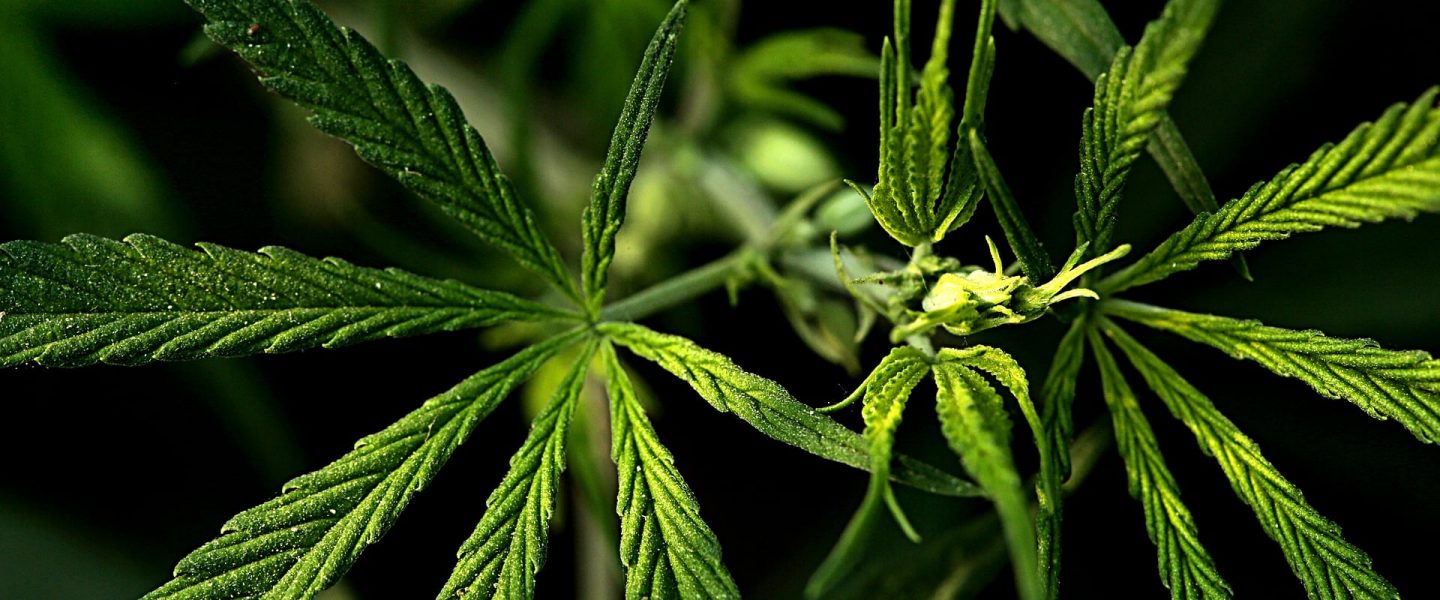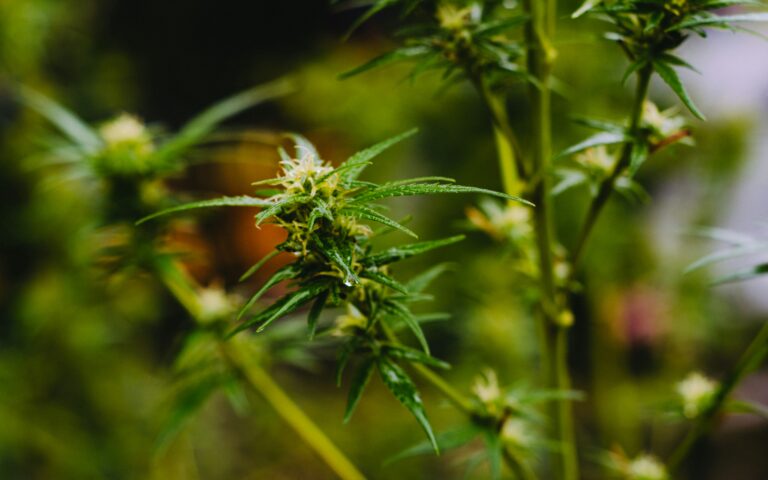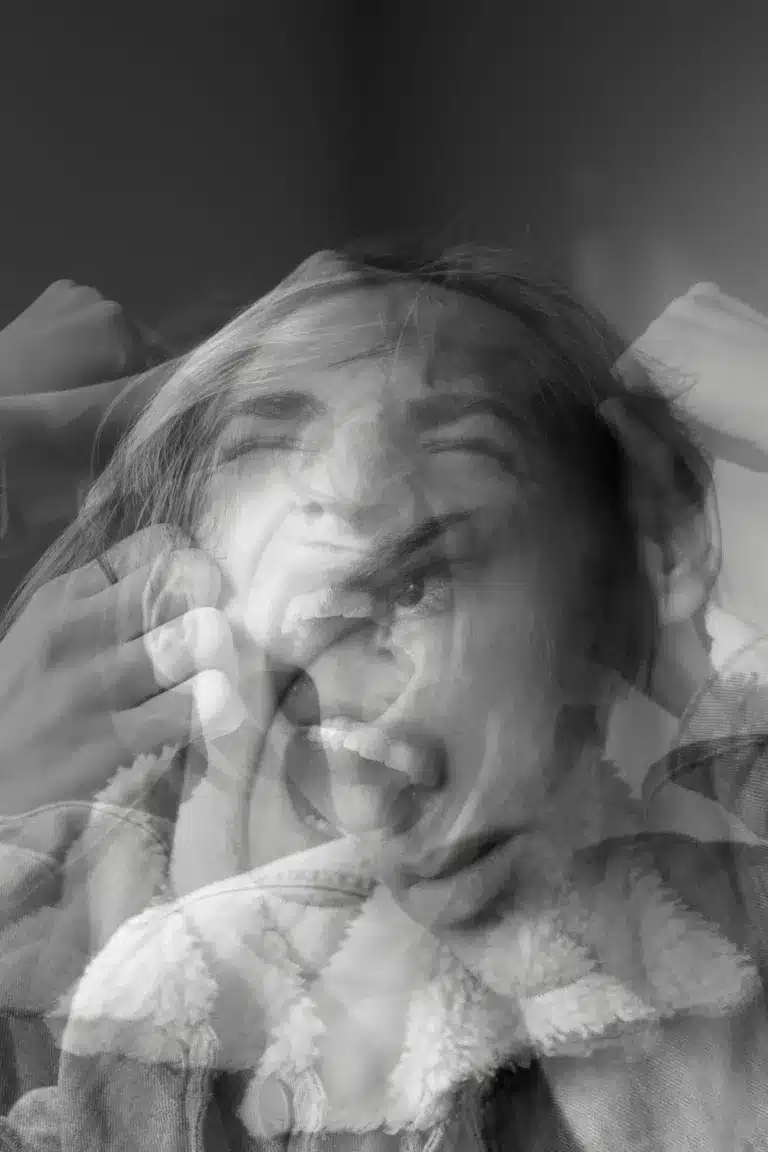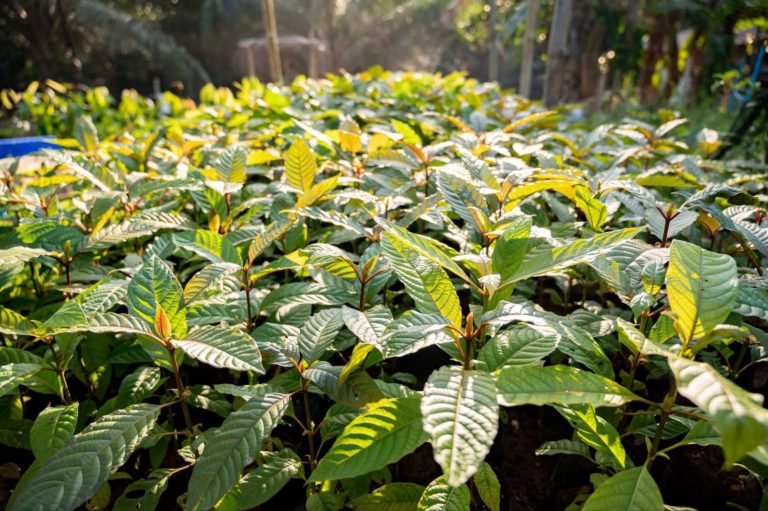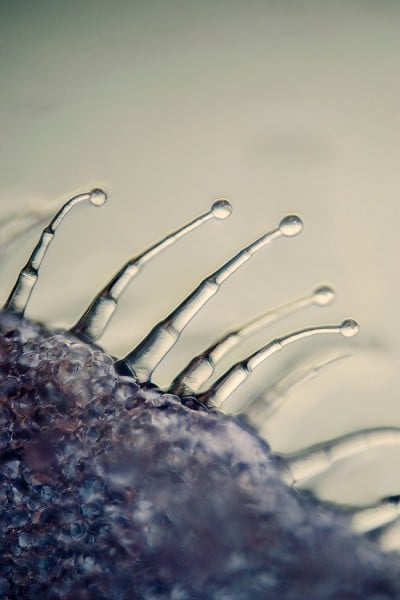
Trichomes and Their Therapeutic Compounds
These crystals are called trichomes (Greek for ‘growth of hair’), but that’s a bit of a misnomer. Under a microscope, trichomes start to look a lot more like little mushrooms. Lucky for us, the gland at the very top of these hair-like protrusions on the cannabis plant is a one-of-a-kind manufacturing facility for hundreds of known therapeutic compounds called cannabinoids, terpenes, and flavonoids.
But ……How? Little Chemicals called vacuoles and plastids are manufactured in the trichome’s hair like stalk. When they are ready, they make the voyage up the stalk to the head of the gland where they meet with ultraviolet (UV) light resulting in the birth of our favorite medicinal compounds, cannabinoids. Over the course of this manufacturing process, the trichomes will begin to change color from clear to a milky white or amber shade (Hülskamp et al. 1999). The color is important because it’s like a secret language signaling the perfect time to harvest.
Trichomes are not unique to cannabis. They grow all over the place, and they have many different uses. For example, some carnivorous plants have trichomes or ‘trigger hairs’ that help them catch their prey.
What are the types of Trichomes?
1. Capitate-stalked trichomes
Capitate-stalked trichomes are the largest trichomes producing the lion’s share of compounds. These trichomes can even be seen by the naked eye. Their structure consists of a stalk that ends in a little bulb (or basal cell) which attaches to a large gland head. The bulb at the top of a trichome serves as a sort of headquarters for cannabinoid and terpenoid synthesis.
2. Capitate sessile trichomes
Capitate Sessile trichomes are slightly smaller and contain both a head and a stalk. They tend to be abundant, but they are not quite as productive as their Capitate-stalked buddies.
3. Bulbous trichomes
Bulbous trichomes are the smallest of the bunch comprised of just a handful of cells. Nevertheless, you can find the frosty looking bulbs all over the surface of the plant (Schellmann et al., 2004).
Oddly enough, the fact that Cannabis trichomes produce the very compounds that act in the endogenous cannabinoid system to create such a dreamy buzz is just a happy coincidence, as far as science is concerned (Hillig, Karl, 2004). Trichomes evolved as the first line of defense to protect baby buds from insects, animals, fungal growth, and environmental dangers. Whatever the reason may be, we’re not mad they’re here.
Hülskamp, M.; Schnittger, A.; Folkers, U. (1999). “Pattern formation and cell differentiation: trichomes in Arabidopsis as a genetic
model system”. International Review of Cytology. 186: 147–178. doi:10.1016/S0074-7696(08)61053-0. ISSN0074-7696. PMID9770299.
Schellmann, Swen; Hulskamp, Martin (2004-09-01). “Epidermal differentiation: trichomes in Arabidopsis as a model system”. The International Journal of Developmental Biology. 49 (5–6): 579–584. doi:10.1387/ijdb.051983ss. ISSN0214-6282.

